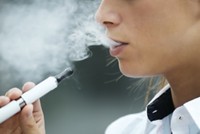Advertisement
Grab your lab coat. Let's get started
Welcome!
Welcome!
Create an account below to get 6 C&EN articles per month, receive newsletters and more - all free.
It seems this is your first time logging in online. Please enter the following information to continue.
As an ACS member you automatically get access to this site. All we need is few more details to create your reading experience.
Not you? Sign in with a different account.
Not you? Sign in with a different account.
ERROR 1
ERROR 1
ERROR 2
ERROR 2
ERROR 2
ERROR 2
ERROR 2
Password and Confirm password must match.
If you have an ACS member number, please enter it here so we can link this account to your membership. (optional)
ERROR 2
ACS values your privacy. By submitting your information, you are gaining access to C&EN and subscribing to our weekly newsletter. We use the information you provide to make your reading experience better, and we will never sell your data to third party members.
Pollution
Thirdhand smoke detected in nonsmoking facility
Tobacco-related compounds probably transported on smokers’ clothes and bodies
by Celia Henry Arnaud
March 15, 2020
| A version of this story appeared in
Volume 98, Issue 10
Even facilities with smoking restrictions may not be able to escape the effects of tobacco smoke. A new study finds that people can transport thirdhand smoke into otherwise smoke-free places. Thirdhand smoke consists of volatile and semivolatile compounds that are released from tobacco smoke deposited on surfaces, including clothes and bodies. Drew R. Gentner of Yale University and coworkers used mass spectrometry to identify organic compounds associated with thirdhand smoke, including 2,5-dimethylfuran, 2-methylfuran, and acetonitrile, in a nonsmoking movie theater (Sci. Adv. 2020, DOI: 10.1126/sciadv.aay4109). Spikes in the concentration of tobacco-related compounds occurred immediately after audience arrival. Emissions of these compounds were higher during R-rated films than during family movies. The researchers posit that the thirdhand smoke components were carried into the theater on audience members’ clothes and bodies. The amount of tobacco-related volatile organic compound emissions in the theater was equivalent to the secondhand smoke produced by 1–10 cigarettes. Fresh air was continually pulled into the theater through the ventilation system, suggesting that exposure could be even higher in poorly ventilated spaces.





Join the conversation
Contact the reporter
Submit a Letter to the Editor for publication
Engage with us on Twitter